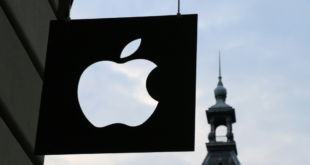
The number of known planets in our solar system has changed over time, but we’re currently sitting at eight since the demotion of Pluto to dwarf planet. However, some scientists believe there is a ninth planet lurking out there in the inky blackness at the edge of the solar system. A new analysis supports the notion that there’s something out there, and it also narrows the region we need to search if we want to find the contentious Planet Nine.
Astronomers started talking seriously about a ninth planet in 2016 when Caltech’s Mike Brown and Konstantin Batygin published a study detailing the unusual orbital behavior of Kuiper Belt Objects (KBOs). These icy chunks of rock orbit the sun out beyond the orbit of Neptune. Pluto might not be a planet anymore, but it was the first KBO ever discovered. According to the original study, the uneven distribution of orbits among KBOs points to the presence of a massive object in the outer solar system. All searches for this planet have come up empty, though.
While some astronomers believe Planet Nine is a good explanation for KBO orbits, there has also been intense criticism of the study. Now, Brown and Batygin are back with a new analysis that aims to address some of those complaints. Chiefly, other scientists noted that it’s difficult to observe KBOs, so many searches focus on the more convenient regions of the sky. Thus, we could simply be looking a biased data.
The Planet Nine duo kept some of the original KBOs in the new data set, but it also includes new space rocks. They also discarded any object that appeared to be influenced by Neptune’s gravity. The updated set of 11 KBOs still shows an unusual orbital distribution. The study claims there is just a 0.4 percent chance that these orbits are a coincidence.
A greater than 99 percent chance that there is a massive object affecting KBOs sounds high, but it’s actually lower than the chance assigned to Planet Nine in the original 2016 study. You could argue, of course, that this is a much more realistic number.

Based on the new simulations, Batygin has created a “treasure map” of sorts that points the way to Planet Nine’s most likely orbital arc. That expansive area crosses the luminous plane of the Milky Way, which might have helped Planet Nine hide from previous searches. This includes a chance in the expected orbit, bringing Planet Nine in closer to Earth. The original analysis estimated it has an orbital period of 18,500 Earth years, but now it’s believed to be in the neighborhood of 7,400 Earth years.
The pair believe we are only a few years away from spotting Planet Nine, and it may be the upcoming Vera Rubin Observatory in Chile. While something like the James Webb telescope has more magnification power, its field of view is small. Vera Rubin will be able to image the entire sky every few days, giving it a better chance of finding Planet Nine. It’s currently slated to go online in 2023.
Now read:
Subscribe Today to get the latest ExtremeTech news delivered right to your inbox.
© 1996-2021 Ziff Davis, LLC. PCMag Digital Group
ExtremeTech is among the federally registered trademarks of
Ziff Davis, LLC and may not be used by third parties without explicit permission.
We strongly encourage you to read our updated PRIVACY POLICY and COOKIE POLICY.
 #Bizwhiznetwork.com Innovation ΛI |Technology News
#Bizwhiznetwork.com Innovation ΛI |Technology News



